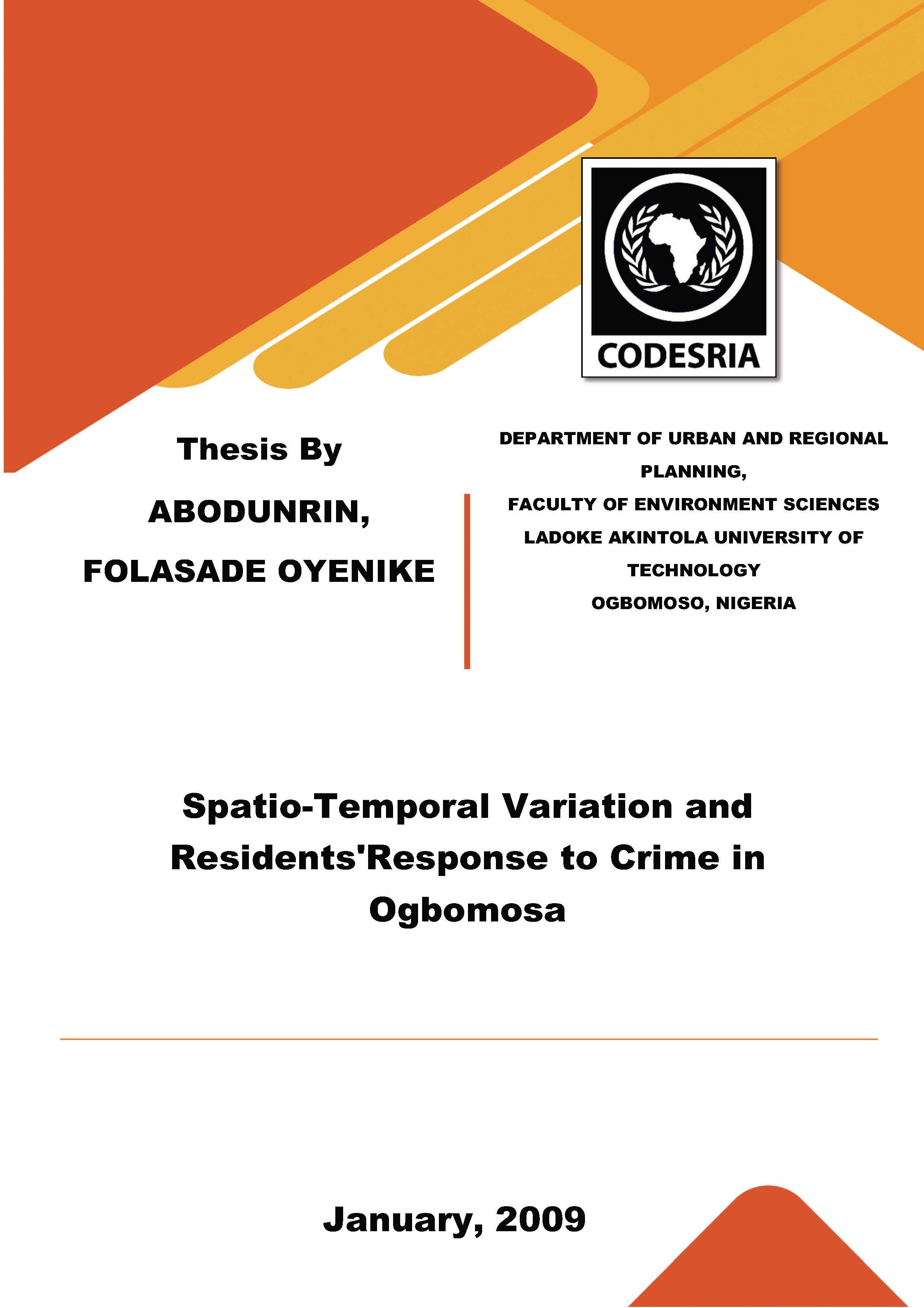Spatio-Temporal Variation and Residents'Response to Crime in Ogbomosa
Keywords:
Crime, urban areas, spatial analysis, police, NigeriaSynopsis
The widening scope of, and increasing sophistication in criminal activities coupled with its seemingly uncontrollable tendencies are some of the nerve-racking social phenomena of concern to social workers and policy makers (Adeboyejo et al 2003). Over a decade ago, reports revealed that one out of every four American household experienced violent crime of theft every year (U.S. News and World Report, 1996). The city of Chicago records seven hundred murders in one year resulting from the use of crack cocaine (The Watch Tower, 1994). The state of security in South Africa is so pathetic that Osaghae (1994) concluded that the country is “structurally violent”. In Nigeria, many urban areas have become sites of very raucous and violent crimes featuring different kinds of vices that threaten the security of the people and the liveability of the cities (Ayeni-Akeke, 2001). The past months in the country in particular has witnessed unprecedented upsurge in cases of assassinations, armed robbery, banditry and ritual killings. However, the type or form and, rate of occurrence of crime vary from city to city and over time. It has been argued that, we can perhaps not find a city where there is no appreciable number of people who are frustrated, impoverished or dissatisfied and ready to vent off their grievances through organized criminality, individually or collectively (Ayeni-Akeke, 2001). Suffice to say then, that no city, Ogbomoso inclusive is totally out of crime, though the level may differ.
Crime and delinquency are often seen as “twin pathologies’ of urbanization and industrialization. To many observers, crime is integrally linked with these social
Downloads






